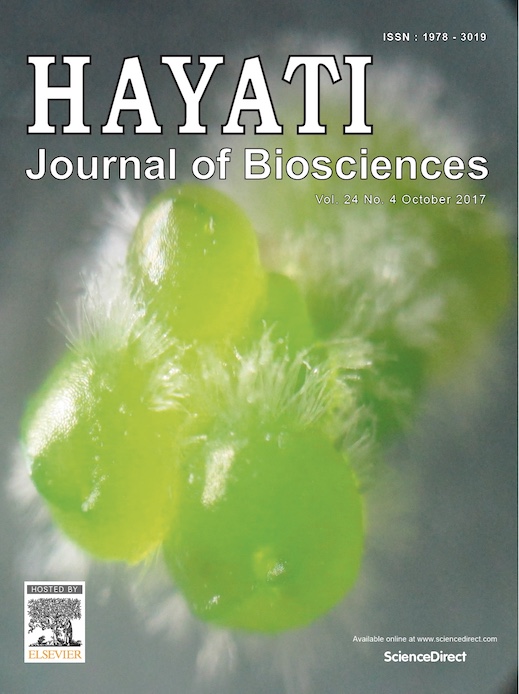Methylmercury Biosorption Activity by Methylmercury-resistant Lactic Acid Bacteria Isolated From West Sekotong, Indonesia
Abstract
Methylmercury has been generally known as a toxic heavy metal for both human and environment. Bacterial-based bioremediation of heavy metal is suggested as an ecofriendly and low-cost bioremediation process. There was limited information regarding the role of lactic acid bacteria (LAB) as detoxification agent for methylmercury addressed for human body. West Sekotong, West Lombok, Indonesia, is one of the newly developed artisanal and small-scale gold mining site with high mercury contamination level. This present study was aimed to isolate the human origin methylmercury-resistant LAB and further evaluate their ability to absorb methylmercury. Methylmercury absorption assay was conducted in broth media. The remaining and absorbed methylmercury was measured using the gas chromatography flame ionization detector. A total of 56 methylmercury-resistant LAB isolates were isolated from 37 feces and 19 breast milk samples from 19 volunteers in West Sekotong. Of them, 10 isolates were further selected based on several basic probiotic characteristics and subjected to methylmercury removal assay. The selected isolates showed different methylmercury absorption ability ranged between 17.375 and 51.597 μg/g of wet mass of cell after incubated for 24 hours. Two isolates from feces showing the best removal activity were identified as Enterococcus durans and one isolates from breast milk as Enterococcus faecium based on the sequences of 16s rDNA.Downloads
HAYATI J Biosci is an open access journal and the article's license is CC-BY-NC. This license lets others distribute, remix, tweak, and build upon author's work, as long as they credit the original creation. Authors retain copyright and grant the journal/publisher non exclusive publishing rights with the work simultaneously licensed under a https://creativecommons.org/

























.png) IPB University
IPB University Department of Biology
Department of Biology The Indonesian Biological Society
The Indonesian Biological Society 

